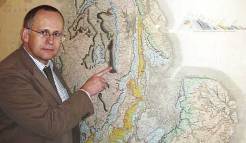
There’s nothing quite like seeing your final job advertised – in your own magazine, too (
Geoscientist 27.11, p4) - to remind one of the transience of things; unless it be publishing the obituary of my first line manager, the
incomparable Lou Macchi. Both events have made me think about how it all started, with my first job - which was in Cheshire (subject of our
first feature this month) as a petrographer (subject of
the second).
It was the early ‘80s. UK consultancies, suckled on North Sea business, were now looking to other plays – and away from clastics to limestones. Carbonate sedimentologists were fewer on the ground than their clastic brethren, and many operators lacked experience. For that reason, even a palaeontologist in disguise (albeit one who had worked on limestones) could get a job; and for the same reason, training in carbonate petrology, sedimentology and diagenesis was in demand. Thus was born what I suspect was the first book that anyone ever paid me to write.
‘The Petrographic Interpretation of Carbonate Sediments – a course for petroleum geologists’, was published by the company in 1983, to accompany a week-long intensive course. It is a work packed with action, pathos and syngenetic sabhka dolomites, and was written somehow in between describing the hundreds of thousands of feet of core and ditch-cuttings from Kuwait that was my team’s main responsibility.
I never got to deliver it myself, alas. It was published in 1983, as the first oil shock struck. Brent crude hit $28; difficult wells were capped; consultancies (which depend on such difficulties) caught an early cold, and I (like all others ‘last in’ at their pay-grade) was ‘first out’.
I decided at this point to run away and join the circus that is science journalism; but as I now read the book again, marvelling at what I once knew, I am reminded of the joy that is petrography; the excitement of seeing something in a minuscule pore space, diagnosing all the things that had happened there since deposition, and drawing conclusions that might be hugely important for the client.
Alan Poole, of the Engineering Group’s Applied Petrography Group, conveys the same excitement, though in a different field – construction. From the infinitesimally small can spring solutions to great practical problems. Looking back, I am glad that I have been allowed – even if only briefly – to share that excitement for myself.
DR TED NIELD NUJ FGS, EDITOR
[email protected], @TedNield @geoscientistmag